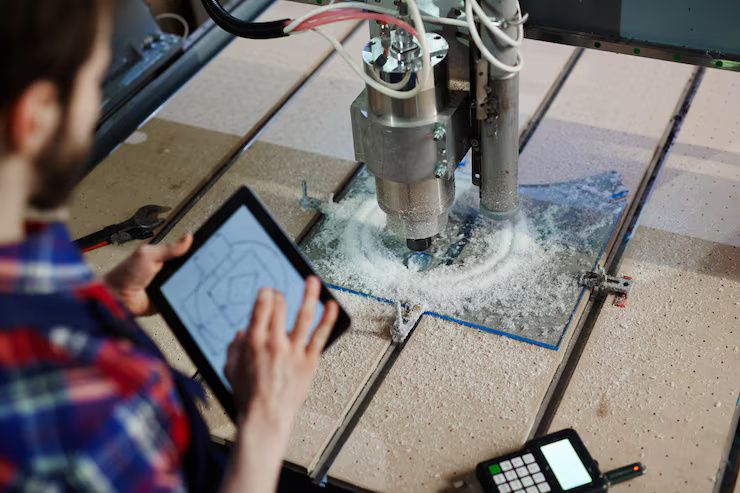Plastic Injection Molding Machines: A Comprehensive Guide
Plastic injection molding machines are specialized equipment used to manufacture a wide variety of plastic products by injecting molten plastic into a mold. Once cooled and solidified, the plastic takes the shape of the mold cavity, producing consistent, high-quality parts. This process is used in countless industries, from automotive and electronics to consumer goods and medical devices.
The concept of injection molding dates back to the late 19th century, but it has evolved significantly with advancements in materials, automation, and precision engineering. Modern machines offer greater efficiency, energy savings, and the ability to handle complex designs.

Why plastic injection molding machines matter today
Plastic injection molding plays a vital role in the global manufacturing industry because it offers:
-
High production efficiency – Machines can produce thousands of identical parts with minimal human intervention.
-
Design flexibility – Suitable for complex shapes and detailed features.
-
Material versatility – Can process a wide range of thermoplastics, thermosetting plastics, and composite materials.
-
Cost-effectiveness – Economical for large-scale production due to low per-unit cost.
-
Consistency – Delivers uniform parts with precise dimensions.
Who is affected?
-
Manufacturers producing high-volume plastic goods.
-
Product designers who require complex shapes.
-
Industries such as automotive, packaging, medical devices, and electronics.
-
Small businesses that outsource plastic part manufacturing.
Problems it solves:
-
Reduces manual labor in mass production.
-
Ensures consistent quality and durability.
-
Meets the high demand for affordable plastic products.
Recent updates in plastic injection molding (2024–2025)
The last year has seen significant technological developments in the injection molding sector:
| Trend | Description |
|---|---|
| Electric injection molding machines | Increasing adoption due to energy efficiency and precision compared to hydraulic models. |
| Industry 4.0 integration | Machines equipped with IoT sensors for real-time monitoring, predictive maintenance, and remote control. |
| Recycled materials | Rising use of post-consumer recycled plastics to meet sustainability goals. |
| Micro-molding technology | Advanced machines capable of producing miniature components for medical and electronics applications. |
| AI-assisted production | Artificial intelligence now helps optimize cycle times, reduce waste, and predict potential defects. |
For example, in March 2025, several manufacturers at the Plastics Technology Expo showcased fully automated systems with AI-powered defect detection, significantly improving quality control.
How laws and regulations affect plastic injection molding
Governments worldwide regulate the use of plastic materials, production processes, and environmental impact. These laws often influence the operation and design of injection molding machines.
Key regulations include:
| Law / Standard | Region | Key Impact |
|---|---|---|
| EU Single-Use Plastics Directive | Europe | Restricts certain plastic products, pushing manufacturers toward recyclable materials. |
| OSHA Safety Standards | USA | Requires safety measures for operators, including machine guarding and emergency stops. |
| ISO 9001 & ISO 14001 | Global | Quality management and environmental responsibility standards for manufacturers. |
| RoHS Directive | EU | Limits hazardous substances in electrical/electronic components made with injection molding. |
| Extended Producer Responsibility (EPR) | Various countries | Holds manufacturers responsible for end-of-life disposal of plastic products. |
Compliance ensures product safety, environmental responsibility, and market access.
Tools and resources for plastic injection molding
There are many resources to help manufacturers and engineers work efficiently with injection molding machines:
Design and Simulation Software:
-
Autodesk Moldflow
-
SolidWorks Plastics
-
Siemens NX Mold Design
Machine Monitoring Tools:
-
RJG eDART System
-
Matics Real-time Operational Intelligence
Training Resources:
-
Society of Plastics Engineers (SPE) courses
-
Plastics Technology webinars
-
Online tutorials from molding machine manufacturers
Material Databases:
-
CAMPUS Plastics Database
-
MatWeb Material Property Database
Calculators and Templates:
-
Cycle time calculators
-
Cooling time estimators
-
Mold cost estimation spreadsheets
Frequently asked questions
1. What types of plastic injection molding machines are there?
There are three main types: hydraulic, electric, and hybrid machines. Hydraulic machines are durable and strong, electric machines are energy-efficient and precise, and hybrid machines combine both benefits.
2. How long does it take to produce a part?
Cycle times vary from a few seconds to several minutes, depending on part size, complexity, and material used.
3. Can injection molding use recycled plastics?
Yes, many machines can process recycled thermoplastics, although material properties may differ from virgin plastics.
4. What is the lifespan of a plastic injection molding machine?
With proper maintenance, machines can last 15–20 years or more, depending on usage and technology upgrades.
5. What is the difference between injection molding and 3D printing?
Injection molding is ideal for mass production with high repeatability, while 3D printing is better for prototyping and low-volume custom production.
Summary comparison table
| Feature | Hydraulic | Electric | Hybrid |
|---|---|---|---|
| Energy efficiency | Moderate | High | High |
| Precision | Moderate | High | High |
| Speed | High | High | High |
| Initial cost | Lower | Higher | Moderate |
| Maintenance | More frequent | Less frequent | Moderate |
Final thoughts
Plastic injection molding machines remain a cornerstone of global manufacturing, enabling mass production of precise, affordable, and durable plastic parts. By staying updated on technological trends, complying with regulations, and using the right tools, businesses can optimize their production while meeting sustainability goals.
The technology continues to evolve, with advances in automation, AI integration, and eco-friendly materials shaping the future of plastic manufacturing. Whether you’re in product design, manufacturing, or engineering, understanding these machines is essential to making informed decisions and maintaining competitiveness in today’s market.
